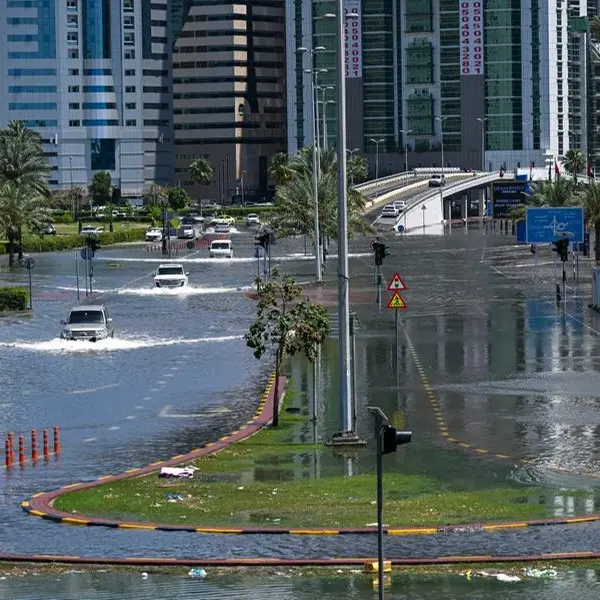PHOTO
Since the onset of the COVID-19 pandemic, we have come across many harrowing and tragic stories about people struggling in a variety of ways. One particular theme is gaining more attention these days, as emerging evidence is published on the lingering symptoms known as long COVID-19. In the past year or so, many newspapers have published personal stories from people who have revealed their prolonged battles with a number of unexplained health conditions following their infection with the virus.
The global research community is now endeavoring to explain the scientific theories behind such claims, propelling it into global and national policy agendas. A distinguished study published by Penn State College of Medicine noted several debilitating symptoms experienced by COVID-19 patients that last from one month to six months or more. Overall, the virus seems to affect patients’ general well-being, with more than half experiencing weight loss, fatigue, fever or pain. Other symptoms include decreased mobility, reduced concentration or “brain fog,” shortness of breath, chest pain, palpitations, muscle ache, stomachache, vomiting, and lack of appetite.
With such an exhausting set of health conditions, it is no wonder many people have felt unable to return to full-time employment, perform daily tasks, take care of themselves or care for their dependents. As a result of their lack of economic self-sufficiency, isolation and ongoing health challenges, it is no wonder that many patients have reported increased anxiety, depression, suicide contemplation or post-traumatic stress disorder.
It is estimated that more than half of the approximate 269 million people who have survived infection since December 2019 will experience long COVID-19 up to six months after recovery, according to the research published by Penn State College of Medicine. With such an alarming number of people suffering from long COVID-19, it is a problem that is already imploding and manifesting in devastating ways.
Many people are left in precarious situations, wherein their inability to work has compelled them to seek welfare benefits and assistance from social and childcare services. Such enormous losses in physical health, mental well-being and economic productivity can have lasting effects on communities if robust interventions are not urgently introduced.
However, most national data dashboards reflecting the current COVID-19 situation focus on infection rates, death rates, the number of recovered cases and the number of active cases — with no mention whatsoever of long COVID-19 cases. It is critical that data analytics on the number of people suffering from long COVID-19 is added to this dashboard, along with a comprehensive assessment of the common symptoms faced by patients and the time period they are experiencing them for. This information will sound the alarm to policymakers and the health sector on delivering diagnosis and treatment plans to patients across different geographies.
For rehabilitation clinics to function optimally, health workers would need to rely on cutting-edge research that sheds light on effective diagnosis and treatment plans for patients of long COVID-19. Thus, it is critical that nations channel ample resources into world-class research and innovation in this area. It is important to understand how long COVID-19 affects different populations, especially with various age groups, health backgrounds and other associated risks. Innovative diagnostics could aid health workers in pinpointing a COVID-19 infection to common symptoms being experienced by patients and the length of these symptoms. Furthermore, researchers would need to experiment with various treatment and case management plans to reach an optimal set of long-term solutions for patients. Such an ambitious undertaking would need financial backing, in addition to gathering the brightest scientists that can deliver on these research targets.
The governments in many countries, including the UAE, UK, US, Malaysia and Germany, have set up dedicated long COVID-19 clinics to provide rehabilitation services aimed at mitigating its physical and mental health effects. The UAE’s leading hospitals have launched special post-COVID-19 screening packages to detect common symptoms and manage them accordingly. In the UK, 90 long COVID-19 assessment centers have opened to address the growing needs of patients, who are later referred to specialists depending on their symptoms.
In another example, Post-COVID-19 Rehabilitation at Medical Park in Germany offers a range of services for long COVID-19 patients. First and foremost, a comprehensive assessment plan covers cardiology, neurology, orthopedics and psychosomatic medicine in order to conclude the diagnosis and arrive at a customized treatment plan. Subsequently, therapy includes a range of solutions focusing on respiratory therapy, mobility training, training to boost cardiopulmonary endurance, osteopathy, pain therapy and psychotherapeutic treatments.
With notable reductions in the quality of life of patients, it is vital that a range of care services be urgently made available. These include childcare services to care for their young dependents and social care services to assist them with their daily activities. Additionally, as many are finding it difficult to return to full-time employment, it is important that some form of temporary financial assistance is dispensed until a full recovery is made. It is also vital to provide counseling services to patients, especially those who are suffering from mental health conditions as a result of facing such tumultuous challenges.
Considering the debilitating effects of long COVID-19 on vast populations, it is critical that policymakers urgently include this issue on their national agendas.
- Sara Al-Mulla is an Emirati civil servant with an interest in human development policy and children’s literature. She can be contacted at www.amorelicious.com.
Copyright: Arab News © 2022 All rights reserved. Provided by SyndiGate Media Inc. (Syndigate.info).












